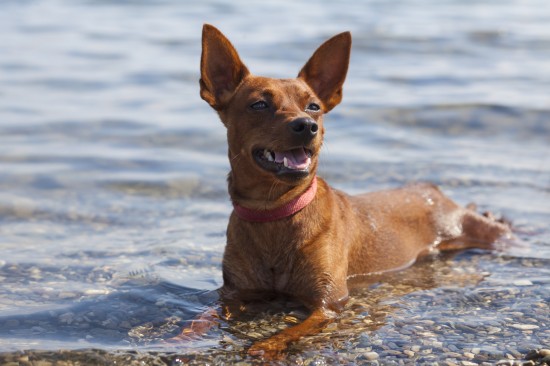Results of a study by a group of Australian ecologists, published in the British Ecological Society's "Journal of Animal Ecology", reveals how the world's biggest living reptile came to be discovered in so many South Pacific islands, despite having little stamina for swimming.
A University of Queensland ecologist and author of the study, Hamish Campbell, said "Like a surfer catching a wave, river Crocodiles, which can grow up to 20 feet (6 meters), can ride currents and cross hundreds of miles of open sea".
Involving environmentalist and television personality, Steve Irwin, the so-called Crocodile Hunter who was killed by a stingray barb off Queensland in 2006, the research commenced in 2002, in the tropics of Australia's Queensland state.
The group used sonar transmitters and underwater receivers to track the movements of 27adult crocodiles over a 12 month period. The group tagged the crocodiles in the isolated Kennedy River region.
Campbell said a 20-minute swim is hard work for a crocodile, so he was astounded that eight of the tagged crocodiles repeatedly took long voyages out to sea from their river home area, which was more than 35 miles (60 kilometers) in land.
Campbell told The Associated Press, "It did seem unlikely that they were swimming the entire way and when we looked at residual surface currents from satellite images, you could see quite clearly that they were indeed following the current systems."
One 13-foot (3.8-meter) male swam 367 miles (590 kilometers) for twenty-five days in order to reach another river system, where it rested for seven months before making the return journey.
Campbell said, "Why he went there, we have absolutely no idea, but it seems very deliberate, purposeful movements".
The research revealed that currents are able to transport crocodiles, which can live for months on end without food or fresh water, across enormous tracks of ocean. It also explains why the same species of estuarine crocodile is seen in different countries, divided by the sea.
Independent of the research, an Australian crocodile expert and zoologist, Grahame Webb, welcomed the results of the research as the first presentation of how crocodiles use currents.
"Long distances voyages at sea have always been a bit rare with crocs, and people have suspected that currents played a part. The research shows they're much more mobile than people realize? Webb said.
A twenty-minute struggle in a trap has the ability to kill a crocodile, as exertion quickly created a rapid buildup of lactic acid in their blood. Large crocodiles are very powerful, but tire extremely quickly.
Estuarine crocodiles mostly live in rivers and mangroves in a range spreading over more than 3,800 square miles (10,000 square kilometers) of the Southeast Pacific from India to Fiji and from China to Australia.
Some Solomon Island crocodiles were discovered in Vanuatu, a distance of around 1000 kms. It is believed the crocs went missing during a cyclone.

 Canine Parvovirus
Canine Parvovirus
Canine Parvovirus
Canine Parvovirus
 Sea Water Is Poisonous To Dogs
Sea Water Is Pois
Sea Water Is Poisonous To Dogs
Sea Water Is Pois
 Five Easy Steps To Curb Inappropriate Chewing In Dogs And Puppies
Five Easy Steps T
Five Easy Steps To Curb Inappropriate Chewing In Dogs And Puppies
Five Easy Steps T
 An Introduction To The Four Sennenhund Dog Breeds
An Introduction T
An Introduction To The Four Sennenhund Dog Breeds
An Introduction T
 How do you know if your dog or cat has allergy problem? Here are signs
How do you know if your dog or cat has allergy problem? He
How do you know if your dog or cat has allergy problem? Here are signs
How do you know if your dog or cat has allergy problem? He